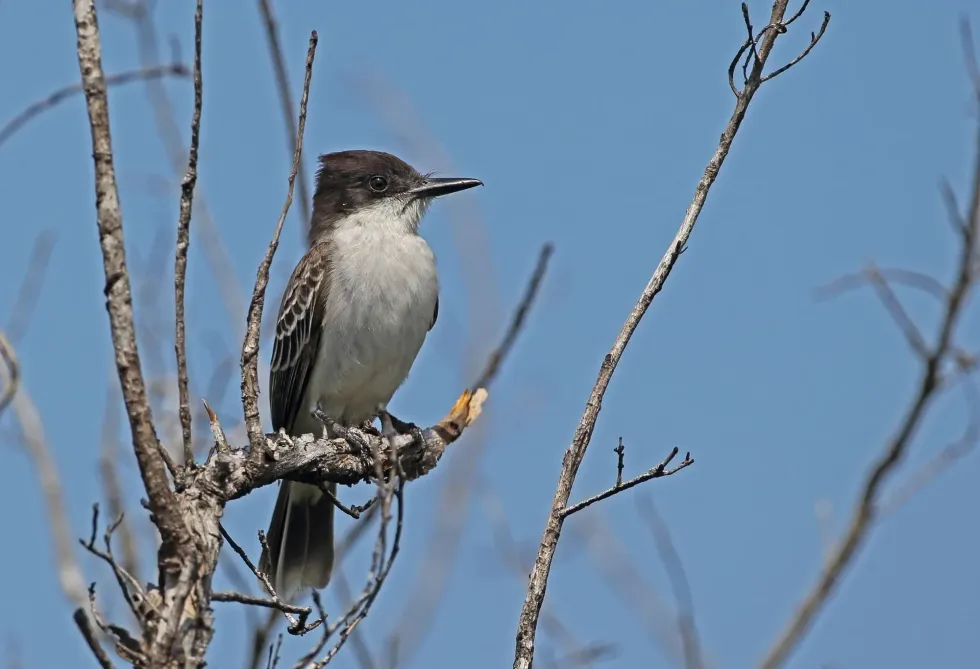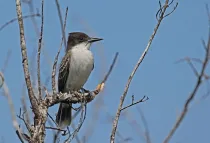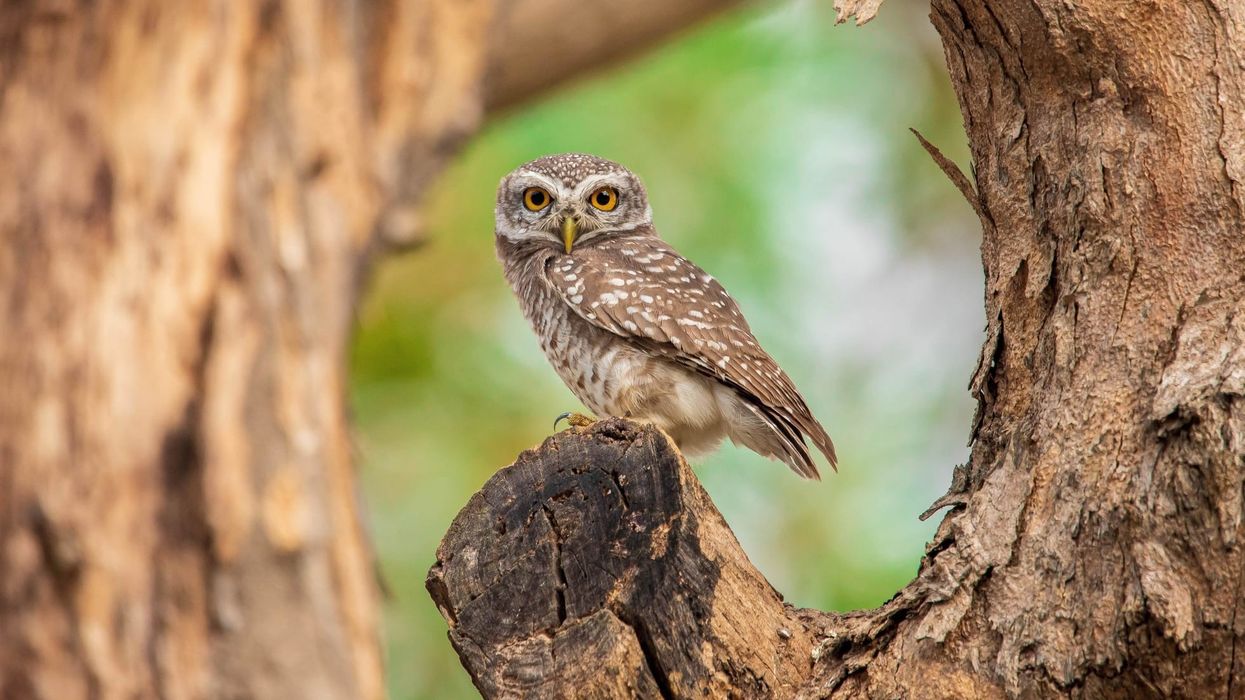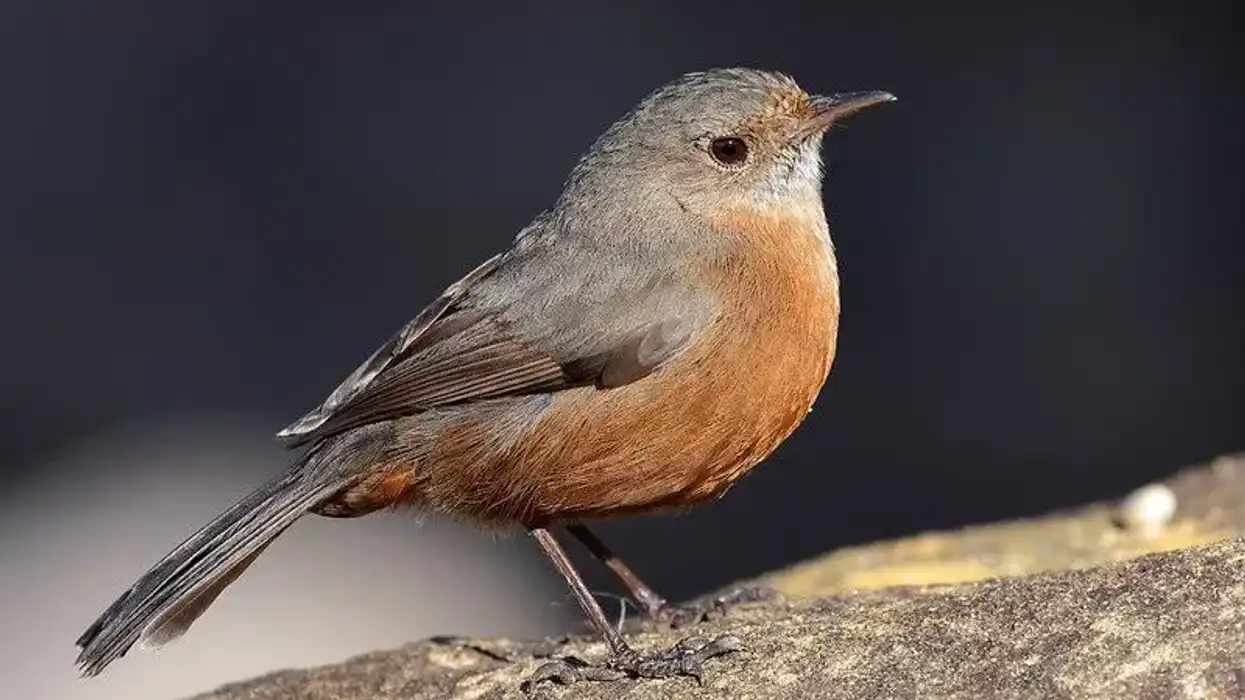If you happen to be in a field in North America, Cuba, Florida, Puerto Rico or the Caribbean islands, chances are that you will see a few kingbirds, including the loggerhead kingbird (Tyrannus caudifasciatus). This tyrant flycatcher bird species is marked by its black colored crown and soft call.
The head black, while the rest of the upper body is gray in color, which creates a monochromatic color palette.
These North American birds survive on a diet that mainly consists of insects, berries and lizards, which are found abundantly in the tropical and subtropical climatic conditions that they prefer.
The adult loggerhead kingbird or flycatcher is amiable and social, and breeds in groups. A nest is made on the ground in the breeding season, and the courting is undertaken. Courting methods include a soft, melodious song that is honestly very soothing to hear.
One of the key facts about this species is that the birds don't take part in any migration. To know more, read ahead!
For more relatable content, check out these bee hummingbird facts and cockatoo facts for kids.
Loggerhead Kingbird Interesting Facts
What type of animal is a loggerhead kingbird?
The loggerhead kingbird, well, is a tyrant bird of the kingbird family (tyrannidae)! These birds of North America are related to other tyrant flycatcher birds.
What class of animal does a loggerhead kingbird belong to?
The scientific term of the class of animals that the loggerhead kingbird belongs to is aves, but we may just as well classify them as birds!
How many loggerhead kingbirds are there in the world?
Unfortunately, there is no definitive number that can be assigned to the population of the loggerhead kingbirds. However, the conservation status of these birds does tell us that the current population size is quite stable and that they are not rare in their places of habitat!
Where does a loggerhead kingbird live?
The loggerhead kingbird, like other kingbirds such as the Eastern kingbird and Western kingbird, prefers to inhabit tropical and sub-tropical lowland forest range. Moist climates are best suited to them during the breeding season.
What is a loggerhead kingbird's habitat?
The loggerhead kingbird range map is spread all over North America and the Caribbean islands. This tyrant species is also common in the Cayman islands, Haiti, Cuba, the Dominican Republic and south Florida.
Who do loggerhead kingbirds live with?
It is speculated through their nesting behavior that the loggerhead kingbirds are social birds. While they may not be found in large flocks, these birds are seen in close groups. Once in a while, a few solitary birds or a mated pair may also be spotted.
How long does a loggerhead kingbird live?
While the lifespan of an adult loggerhead kingbird in its wild habitat or field is not known, the Eastern kingfish, which is a closely related species, has the average lifespan of about 11 years. Since the two species are so similar, we may assume that the lifespan of the loggerhead kingbirds is also approximately the same.
How do they reproduce?
Loggerhead kingbirds are an oviparous species. This means that these birds reproduce by laying eggs.
The nest is usually made on the open ground, and the female bird lays around 3-5 eggs in each clutch. The courting behavior is not known, but once the eggs are laid, the female alone incubates them for about 20 days.
The new-born nestlings are taken care of by both parent birds till they are capable of catching their own prey.
What is their conservation status?
According to the IUCN Red List, the conservation status of the loggerhead kingbird (Tyrannus caudifasciatus) species is that of Least Concern. Not only does that mean that the population size of the species is stable, but also that these birds of North America have a home that is unlikely to get degraded in the near future.
Loggerhead Kingbird Fun Facts
What do loggerhead kingbirds look like?
The loggerhead kingbird has a black colored crown, white underparts and wing coverts, and a dark gray colored upper body plumage. The bill is broad and large, and feet are black in color.
The edges of the feathers in the wings are lined in white color, and the tail is dark gray or black. Several kingbirds such as the Eastern kingbird has similar features, but is smaller in size. Lot's of bird watchers enjoy taking photos of this bird.
How cute are they?
It would hardly come as a surprise if we said that we find the loggerhead kingbirds to be impeccably cute creatures. The monochrome plumage and broad bill, combined with the tufted, black colored head makes these North American birds of the tyrannidae family very adorable. They are very cute and thus bird watchers enjoy taking photos of loggerhead kingbirds.
How do they communicate?
There is a wide array of sounds that loggerhead kingbirds can make. This includes soft melodious calls, as well as defensive and loud calls when they sense any danger.
How big is a loggerhead kingbird?
The loggerhead kingbird from the flycatcher family has an average length of 9-10 in (23-25.4 cm). An average great grey owl can be three times the length of these beautiful birds.
How fast can a loggerhead kingbird fly?
While the average flight speed of the loggerhead kingbird is unknown to us, it can be concluded from their wingspan that these birds are fairly good at flying!
How much does a loggerhead kingbird weigh?
The average loggerhead kingbird (Tyrannus caudifasciatus) weighs around 1.5-1.9 oz (43-55 g). While it is clear that these birds are very light-weighted, did you know that they can weigh more than 10 times a rufous hummingbird!
What are the male and female names of the species?
Since there are no distinct names for the male and female loggerhead kingbirds, we choose to simply refer to them as the male loggerhead kingbird and the female loggerhead kingbird.
What would you call a baby loggerhead kingbird?
The baby loggerhead kingbird would be called by the same name as all juveniles in the class of aves - chick, nestling or hatchling.
What do they eat?
The diet of the loggerhead kingbird species consists mainly of a long list of berries and seeds that are found freely in their natural habitat. They also feed on several kinds of insects and lizards whenever the opportunity presents on the field.
Are they dangerous?
If you are wondering if these beautiful creatures have any hidden truths that could prove dangerous to you or any other animal species, be assured that they pose no threat at all. These birds are peaceful and will never cause you any harm!
Although, the insects and lizards that they feed on will definitely have a different story to tell!
Would they make a good pet?
There are no reasons that would lead anyone to believe that the loggerhead kingbird species would not make a good pet. While they are not commonly domesticated around the world, they are pretty amiable.
The only factor that may motivate you into not having this bird species as a pet is the act that they would require the occasional lizard or insects in their diet, as it plays a key role in their reproductive health.
Did you know...
The loggerhead kingbird call is soft and melodious.
This tyrant bird species is known for its remarkably monochromatic plumage, its relation to the family of flycatchers and its North American habitat. They are sometime spotted along the southern parts of Florida.
Scientists were unable to identify this species in USA until March, 2007.
The eastern kingbird and white-throated kingbird are some of the several bird species that also belong to the genus Tyrannus.
The loggerhead kingbird does not exhibit migration.
What threats do loggerhead kingbirds face?
The description of the current conservation status of the species defines that the habitat of the loggerhead kingbirds is not likely to decline in the near future. The species is not threatened by any factors at the present moment, since natural predators can hardly be counted as a threat to the entire species.
Difference between a loggerhead kingbird and Eastern kingbird?
The loggerhead kingbird and Eastern kingbird are both birds of North America, but the two species have some differences. The loggerhead kingbirds have a larger body and bill as compared to the Eastern kingbird, which is smaller, more light-weighted and has a smaller bill. The Eastern kingbirds also have a white band at the end of the tail.
Here at Kidadl, we have carefully created lots of interesting family-friendly animal facts for everyone to discover! For more relatable content, check out these Caspian tern facts and Northern gannet facts pages.
You can even occupy yourself at home by coloring in one of our free printable bird coloring pages.









